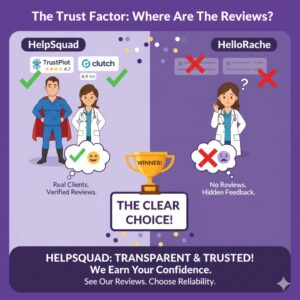Want to Attract Qualified Students to Your College? Use Honey.
05 Jun 2020 By: Natalya Bucuy
Updated
In the mid-1960s a man walked into the Massachusetts Institute of Technology’s admissions office.
“I’m here to study electronic surveillance technology,” he said.
The statement caused some confusion since MIT had no record of the young man ever applying to the school. The fact that he also didn’t have a matriculation certificate complicated the matter.
The head of the admissions spoke to the 22-year-old for about 20 minutes. The Israeli-born and raised former military airman presented his knowledge and experience. He explained why he wanted to join the school.
Impressed with the presentation, the admissions officer sent the young man to interview with the Dean of the Science Department.
Two hours later, the Dean called the admissions and told them, “He is accepted!”
After graduating MIT in three years, Efi Arazi went on to work at Itec in New Hampshire developing the “eye in the sky” hardware and software for NASA. He then founded Scitex in Israel in the early ‘70s, one of the very first high tech companies in the country. The company ultimately employed over 7000 people in Israel and worldwide. Scitex was one of the first Israeli companies to go public in the US and was ultimately absorbed by Hewlett-Packard in 2005.
That’s a sweet story, isn’t it?
Wouldn’t it be nice if students like that just walked through the doors of admission offices everywhere? Full of ambition, life experience, fundamentals, and urge to learn?
Ah, isn’t that every admission officer’s dream?
Unfortunately, the story of Efi Arazi was an exception to the rule in the 1960s and it would be an exception to the rule in 2020. Admission officers have to work hard to attract qualified students to their schools.
How can they do it efficiently, in the face of changing circumstances, views, and values in today’s society?
By using a little honey, rather than vinegar, as the old saying goes. We’ll explain.
Changing Landscape of Freshmen Pickings
Higher education is a serious business. There are rules to admissions. There are procedures to follow.
Review panels are required to assess applicants’ grades, extra curricular activities, work ethic, character, and personality.
Additionally, today’s admission officers must take into consideration the fact that the higher education environment is changing.
COVID-19 crisis significantly impacted college admissions in 2020.
Consider these statistics from Inside Higher Ed:
- 10% of college-bound seniors who had planned to enroll at a four-year college before the COVID-19 outbreak have already made alternative plans.
- Gap years may be gaining in popularity. While hard to track, there are estimates that 3% of freshmen take a gap year. Since the pandemic, internet searches for gap years have skyrocketed.
- College students do not like the online education they have been receiving. To finish their degrees, 85% want to go back to campus, but 15% want to finish online.
Moreover, online and distance learning studies are gaining popularity. Trade schools, apprenticeships, and other alternatives to traditional four-year-degree programs look attractive to more students today. This increases competition and make it harder for universities to attract qualified students.
Furthermore, freshman entering higher education institutions in the 2020s look very different from previous generations of college students. They have different interests, skills, priorities, and attitudes towards education than they did a decade ago.

Generation Z prefers collaborative, hands-on learning, and extensive use of technology and digital learning tools. These young people have the entrepreneurial mindset, unlimited resources at their fingertips, and an endless craving for innovation. They think, communicate, and connect to the world differently.
Hence, admission officers looking to attract qualified students to their schools must also do things a bit differently than in the past.
Students as Customers: A Controversial Idea That Makes Sense.
Students are customers, too.
While that statement sounds a bit out of the ordinary, the notion is not as novice as it sounds. The debate on the matter has existed for quite some time. In recent years, it has been gaining more momentum.
A group of researchers from Liverpool John Moores University conducted a study on the subject in 2006.
The study examined both sides of the argument for and against the notion. Its basic conclusion stated that “by definition a person who pays for a service is a customer.” (Douglas, Alex & Mrs, Jacqueline & Mr, Barry. (2006). The Student As Customer?.)
Simple, right?
Yet, the idea remains controversial. Let’s see why.
Some Educators Reject the Notion of “Student as Customer.” Why?
Here is one scholar’s opinion on seeing a student as a customer.
We have a perfectly good idea of what being a “student” entails. It is a hierarchical relationship between someone who seeks knowledge and others who teach knowledge. It requires some degree of humility and forbearance on both sides. Students have to admit that they don’t yet know; teachers have to admit that those who do not-yet-know-but-would-like-to are in a worthy position that deserves its own respect. (Peter Wood, President of National Association of Scholars)

Another educator warns against treating a student as a customer because he thinks that would take away from the importance of the student’s own efforts.
The student’s active, continual participation in the educational process is required for it to have the value the student wants it to have. Many businesses, on the other hand, actually minimize the amount of work the customer is going to have to do to realize the product or service’s benefits. (Peter Vaill, University of St. Thomas)
Yet, another expert rejects the idea and applies it in a way that borders absurdity.
Imagine how the Yelp template would work in college. Despite the [professor] strongly recommending that the “customer” purchase the Chem 101 textbook, the customer, being always right and in possession of the money, decides instead to purchase the textbook for Abnormal Psych 500 because it “looks better.” Then, when it’s time for midterms customer notices that none of the exam questions match anything she’s read. Since she’s paid many thousands of dollars for this course, she is, as the customer, fully entitled to both an A and a full refund. (Rebecca Schuman, Slate-Education)
(A bit too far?)
Why Completely Rejecting the Notion of “Student as Customer” Robs Colleges of Qualified Students.
The idea of hierarchy Wood mentions certainly supports the traditional setting of the higher education model. However, as we discussed earlier, that model is starting to shift to accommodate new generations of students.
Additionally, broadly applying “student as customer” term to each and all higher education experiences and painting it in negative colors dismisses an important value this notion has.
After all, students receive the treatment of “being a customer” in every other aspect of their lives. From getting gas on the way to campus, to working out at the gym, to going to the theater – everywhere humans go, they are customers.
The extensive “customer experience” movement that is only getting more popular makes customer satisfaction the main focus of any business. In other words, customer service efforts outside higher education are improving and becoming more customer focused than ever.
Students are customers, too.
That is not to say that every detail of college experience must follow the “Student is a Customer” model.

Professor Mandayam Thirunarayanan of Florida International University in Miami explains that that model could only guide students’ experiences outside the classroom. He argues that there is a difference between students buying a product at a store and them earning a degree.
Consumerism stops at my classroom door. When I teach an online course, consumerism stops when students log into my electronic classroom. When they enter my classroom I expect them to earn, not buy, their grades. (The Chronicle of Higher Education)
That being said, outside the classroom students must be treated as customers to avoid experiences that might distract them from their studies. Students come to the universities to receive an education, not deal with red tape, bureaucracy, and hurdles of bad treatment from the administration.
Destiny Solutions explain the notion further in this video:
Students are customers, too. And if a university fails to treat them as such it will risk losing them to places that will invest in customer experience of the students.
What does that mean for admission officers? It means that they should not merely concentrate on statistical “good fits” based on grades, test scores, and perfect admission essays (vinegary necessities). But they must also focus on personal relationships with prospective students. Investing time and efforts into improving customer service (oh, the sweet honey of great customer experiences!) will help attract qualified students to the schools.
You'll attract more flies with honey than with vinegar. Share on XWhat’s the Honey Made Of? (Or How to Improve Admission Customer Service)
While we cannot begin to pretend that we are experts in the higher education admission process, we will tell you that as a customer service company we know a thing or two about customer service.
Students and customers, too, as we established. So if certain customer service practices work for customers in general, they will work for students as well.
So what are some ways to improve customer service for prospective students? The answer is always by building personal connections with customers.
Here are some sure ways to build and strengthen personal relationships with prospective students.
(Excuse our sudden dive into the magic world of Harry Potter. But the good wizards of Hogwarts kind of had it right with the whole admissions process, didn’t they?)
1. Be Like The Sorting Hat
Wouldn’t be nice to borrow the Sorting Hat straight from the wizards of Hogwarts? And then know every student’s character and potential? That would make it some much easier to select and attract qualified students for every school!
But, unfortunately, we can’t.
But the point is, in customer service it is important to really know the customer. Know what they want. Learn what is important to them. Find out exactly what they are looking for in their college experience. All that will help schools attract qualified students. (The Sorting Hat did an amazing job at that, don’t you think?)
If a school has a great writing program and wants to attract more writers, knowing something personal about the prospects can help attract them. Perhaps these students enjoy short fiction discussion groups and the campus happened to have a club that meets weekly. Communicating that to a prospective student would peak her interest.
Personal relationships can help attract qualified students to a school.
How would an admission officer know about such interest from a prospective student? By forming a personal relationship with her. Given, a personal interview might not alway be feasible. But in today’s world there are many digital tools to quickly connect with students. Establish a student referral system, create outreach programs, and just become proactive in the search for qualified students.
Do you know a prospective student who would be a great addition to the Adelphi community? By completing the Student Referral Form, they will receive follow up information from our Admissions Department! https://t.co/S2qj8QjOrf #WisdomWednesday pic.twitter.com/Od1ENWzNFA
— Adelphi University (@AdelphiU) June 3, 2020
Facilitating personal connections in whatever ways possible will help an admission officer get to know the student. And it will also help the student to feel like she is not just a number. Personal connections are important.
Businesses everywhere today aim for customer-focused connections and experiences. Remember, students are customers, too.
2. Get a Hedwig The Owl For Each Student.
It would be cool if every student could have a gift like Hedwig from their school. Correspondence delivered, personal best friend is always at his side…
Unfortunately, admission officers can’t always be there for the students. However, they can ensure that the students always can find the support they need.
We all know the struggle of not being able to find the contact information on a website. Moreover, sometime when we do find it, the system makes us jump through hoops to get our questions answered or even to connect to a real human.
One way to welcome prospective student communications is to install a live chat service on the admissions website. Admission officers can answer the chats during work hours. Additionally a team of helpful agent representatives can pick up the communications when officers are too busy or after hours.
This is a quick and easy way for students to connect to someone, get an answer to a question, and build a relationship with the school before they ever set a foot on campus. Live chat is proven to increase satisfaction rates. And the more effort a school puts into prospective student satisfaction, the more likely it is to attract qualified students.

In fact, statistics show that younger generations prefer live chat communication to any other way to connect. Moreover, today people expect to be able to connect at all hours of the day. (Those live chat agents can be nocturnal, like Hedwig, and provide 24/7 support.)
If a school or its representatives are there for the student whenever he needs, personal connections with the school will only strengthen.
3. Host (and Advertise) Quidditch Matches.
How can a business, any business, stand out among competition? Not by doing what others do better. But by offering something others don’t.
Does a school have something no other institution offer? A specific activity, campus feature, a unique program? Perhaps it should.
Yale University has existed for 318 years. The most popular course in its entire history?
“Psychology and the Good Life” taught by Dr. Laurie Santos. Also known as “the happiness class,” had more than 1,200 students, a fourth of the entire Yale population that semester, sign up within the three days of its offering. A unique guide to happiness through positive psychology, the class and its popularity only grew with time.
Now, Yale University has quite a few amazing things about it. But we bet something like “happiness class” does make it stand out for prospective students.
Every school has something unique about it. Featuring it and communicating it to prospective students can be a tremendous help to admission officers.
Attract Qualified Students with Honey, Not Vinegar.
Students are customers, too Share on XWhile that notion still remains controversial in academic circles, attitudes are changing.
If traditional universities are to stay in the higher education game they must cater to the students as they would to customers in any other business.
Students do not normally show up unannounced at the admissions offices with extraordinary pitches ready. They don’t come, accompanied by an owl, on a magic train either.
But they do like honey. Have some ready for them.


